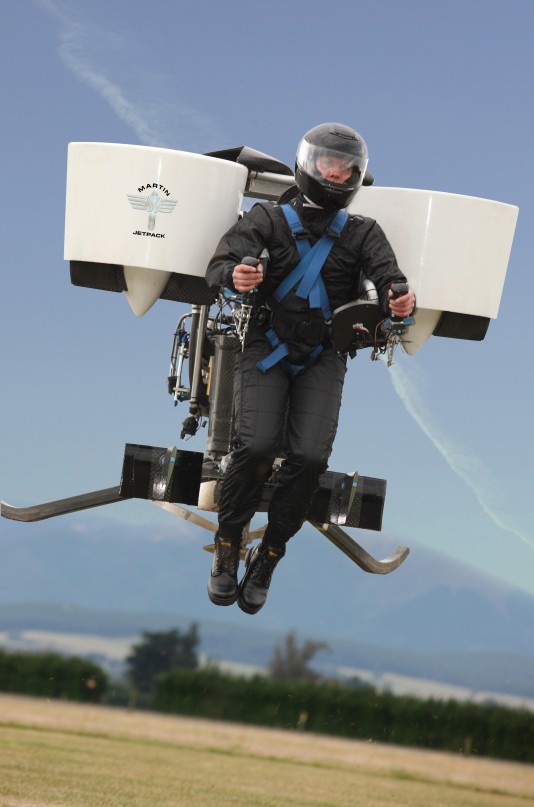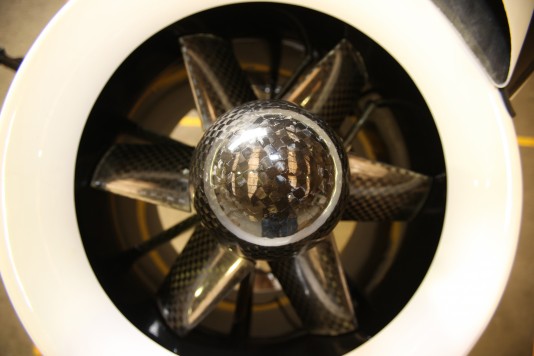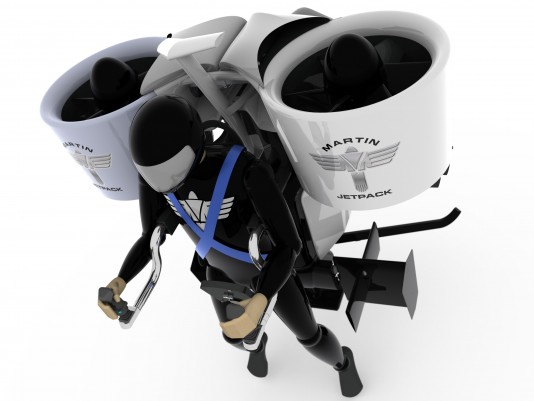Martin Aircraft used SolidWorks to bring the science fiction legendary invention to reality.
[Editor’s Note: Be sure to watch the video at the end of the article.]
Jetpacks routinely make the short list of items people want the future to hurry up and bring. In the 1960s James Bond and the Robinson family of Lost in Space teased the world by using them to escape predicaments. The concept of the jetpack reaches back to the early days of science fiction, yet previous models were unwieldy, unsafe, or unrealistic. That’s until Martin Aircraft developed the Martin Jetpack, the world’s first practical jetpack.

Creating a jetpack for the mass market has long been Glenn Martin’s dream. For the past 30 years, the founder of Martin Aircraft has pursued that goal, culminating in the founding of the New Zealand-based company in 1998. Initially, development progressed slowly, with the company primarily using AutoCAD 2D tools and outside design contractors. Martin decided to move all development onto a 3D design platform in 2008 to accelerate the process. The move paid off, as the Martin Jetpack was named one of Time Magazine’s 50 Best Inventions of 2010.
“Upgrading to 3D was more a matter of necessity than a luxury,” Martin recalls. “R&D had progressed to the point at which we needed to streamline processes and refine the design. In addition to needing better design, simulation, and visualization tools, the engineers that we hired had experience using one 3D system in particular—SolidWorks.”
Martin Aircraft selected SolidWorks solutions to finalize development of the Martin Jetpack, implementing SolidWorks Professional and SolidWorks Premium design software, and SolidWorks Simulation and SolidWorks Flow Simulation analysis tools, in 2008. “Our engineers knew how to use SolidWorks. Our composites partner used SolidWorks. The choice was obvious,” Martin says.

Accelerating research and development
The Martin Jetpack is unique in its use of vector controls and a custom-designed gasoline engine, which drives twin-ducted fans that produce sufficient thrust to lift and stabilize the jetpack during vertical takeoff and landing, enabling sustained flight.
It’s also less expensive than previous jetpacks and will sell at a price comparable to a high-end motorcycle or car. As the design nears completion, surfacing and mold development tools have become increasingly important, according to Design Engineer Bill Clemence. “Designing the engine and main structural frame was fairly straightforward, involving generic shapes. Creating the fan blades and housings was another matter. On some parts, everything is a curve, and many are made using composite materials. SolidWorks gave us the surfacing, simulation, and flow simulation tools that we needed to quickly optimize key components,” Clemence stresses.
One of the key productivity benefits Martin Aircraft says it has realized since moving to SolidWorks software is a substantial reduction in the time required to produce composite molds and parts, which has streamlined the company’s prototyping operations.
Producing composite parts from a mold used to require a minimum of three weeks. Martin Aircraft can now create molds and parts within 24 hours, and has eliminated the need to produce prototype molds.
“The combination of SolidWorks and our CNC machine allows us to make molds and parts more quickly and accurately,” Clemence explains. “Testing multiple variations is an integral part of our design process, and with SolidWorks we can make parts with a very short turnaround.”
Making it look good
Because the Martin Jetpack will be sold in leisure and recreational markets—in addition to military, search and rescue, and first responder markets—the design must be aesthetically pleasing. The company also needs to show and demonstrate the design’s attractiveness. Using PhotoView 360 rendering and SolidWorks eDrawings communications tools, Martin Aircraft is able to show cool-looking renderings of the jetpack, as well as detailed engineering views of how it operates.
“We’re using the renderings in our brochures and pamphlets,” Martin points out. “When I’m traveling overseas, I use these renderings and eDrawings files to show how the jetpack works in as much detail as necessary. SolidWorks solutions are integral to every facet of the jetpack’s development.”

Video: Martin Aircraft tests Jetpack:
To demonstrate flight high above the ground and the concept of the ballistic parachute as an emergency safety system, the Martin Jetpack was flown to around 1500m (5000ft), brought down from this height and an off-the-shelf ballistic parachute was deployed.The aircraft was flown via radio control in a chasing helicopter – also demonstrating the ability of the technology to apply to UAV applications. Jetson, Martin Aircraft Company’s weighted dummy was on board, and the parachute was placed out front for visibility and weight balancing.The video features inventor Glenn Martin and RC pilot James Bowker. The Jetpack ascended initially at 4m/s (800ft/min) and the climb took about 6 minutes. The parachute was deployed at around 3000ft above ground level. The aircraft sustained some damage on impact, but we would expect that it is likely a pilot would have walked away from this emergency landing. The total flight was just under 10 minutes.





